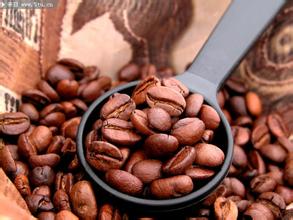Taste characteristics of Guatemalan coffee beans
Guatemala Antigua coffee flavor characteristics: rich, rich taste, with tobacco flavor. The palate is soft and mellow with a hint of charcoal, just like the sweetness of chocolate mixed with smoke. Antigua coffee is also known as "cigarette coffee" because of its unique charcoal-burning aroma
Guatemala Antigua coffee is not only smooth and hard, but also of good quality. It is a perfect combination of acid and sweet. Together with a trace of smoke, it emphasizes its deep depression and mystery.
Guatemala is located in the middle of North and South America, and its geographical position occupies an important position in Central America. Guatemala covers an area of approximately 108899 square kilometers. Land features can be divided into: volcanic plateau, lowland tropical forests, volcanic sandy coastal plains on the Pacific coast, and virgin land on the Caribbean coast. The Sierra Madre Mountains in Central America span east and west of Guatemala, covering an area of about 2/3 and containing 34 volcanoes. Rivers and lakes dot the landscape, while equatorial forests and plain jungles cover it. There are also undeveloped volcanic beaches on the Pacific and Caribbean coasts.
Coffee produced in Guatemala is one of the world's top coffees, because Guatemala is a volcanic terrain with high altitude, and these volcanoes are the most ideal places to grow coffee. The tasters prefer this blend of flavoured coffee with a spicy flavour to other varieties. The extra-hard coffee beans here are rare good coffee, it is full of particles, delicious, balanced acidity. Guatemala has also received attention for its giant coffee beans.
Coffee was introduced to Guatemala in 1750 by Father Jesuit, and German colonists developed the coffee industry in the late 19th century. Today, most of the coffee industry is produced in the south of the country. There are seven major coffee producing areas in Guatemala, and the coffee flavor produced in each producing area is different. However, in summary, the coffee in Guatemala presents a mild and mellow overall texture, with elegant aroma and special and pleasant acidity similar to fruit acid. It has become the aristocrat of coffee, among which Antigua Classic coffee (Antigua Classic) is deeply recommended by coffee connoisseurs around the world.
Antigua is the oldest and most beautiful city in America. As early as 1543, Antigua was the colonial capital of Central America, and the Spanish government was also located here. After a major earthquake in 1773, Antigua was completely destroyed, so the capital was moved to Guatemala. Antigua City is about 40 kilometers west of Guatemala City. Colonial buildings were destroyed by the earthquake. After the earthquake, the original state was preserved as a whole. It can be said to be a living historical museum.
Antigua is a famous coffee producer, rich volcanic soil, low humidity, strong sunlight and cool evening winds are the characteristics of Antigua. Three spectacular active volcanoes-Agua, Acatenango and Fuego-form a beautiful valley. Fuego active volcano also occasionally adds misty dust. Every 30 years or so, the area around Antigua is hit by a volcanic eruption, which provides more nitrogen to the already fertile land, and sufficient rainfall and sunshine make the area more suitable for growing coffee. Antigua coffee is produced at Camana Estate, where the best quality coffee is El Pulcal, which is not only of good quality, but if compared with other Latin American coffees, this coffee can be said to be quite complete, rich and amazing, if you enjoy it with chocolate, there will be unexpected discoveries. The most important thing is that it is very rich in flavor, richer in taste, and it has a fascinating tobacco flavor, known as "the most perfect coffee bean"

Important Notice :
前街咖啡 FrontStreet Coffee has moved to new addredd:
FrontStreet Coffee Address: 315,Donghua East Road,GuangZhou
Tel:020 38364473
- Prev

Guatemala coffee beans Guatemala coffee culture
A cup of Antigua coffee in Guatemala seems to let us see the mysterious Mayans who suddenly disappeared in ancient land, history brushed away their existence, history made them forever. If a person's wrinkles describe the path a person has traveled, then the aroma of coffee remembers the origin of a cup of coffee: about its native terroir, harvest year, roasting and grinding.
- Next

Fine coffee Honduran Coffee Culture History of Honduran Coffee
When it comes to coffee production, the geographical conditions of Honduras are no less than those of neighboring coffee-producing countries such as Guatemala and Nicaragua. However, due to the lack of strong support in the settlement and transportation of raw beans, Honduras is less well-known in the consumer market. Honduras (Honduras) exported $246424000 of coffee in 2010. There are two in Honduras.
Related
- Does Rose Summer choose Blue, Green or Red? Detailed explanation of Rose Summer Coffee plots and Classification in Panamanian Jade Manor
- What is the difference between the origin, producing area, processing plant, cooperative and manor of coffee beans?
- How fine does the espresso powder fit? how to grind the espresso?
- Sca coffee roasting degree color card coffee roasting degree 8 roasting color values what do you mean?
- The practice of lattes: how to make lattes at home
- Introduction to Indonesian Fine Coffee beans-- Java Coffee producing area of Indonesian Arabica Coffee
- How much will the flavor of light and medium roasted rose summer be expressed? What baking level is rose summer suitable for?
- Introduction to the characteristics of washing, sun-drying or wet-planing coffee commonly used in Mantenin, Indonesia
- Price characteristics of Arabica Coffee Bean Starbucks introduction to Manning Coffee Bean Taste producing area Variety Manor
- What is the authentic Yega flavor? What are the flavor characteristics of the really excellent Yejasuffi coffee beans?

